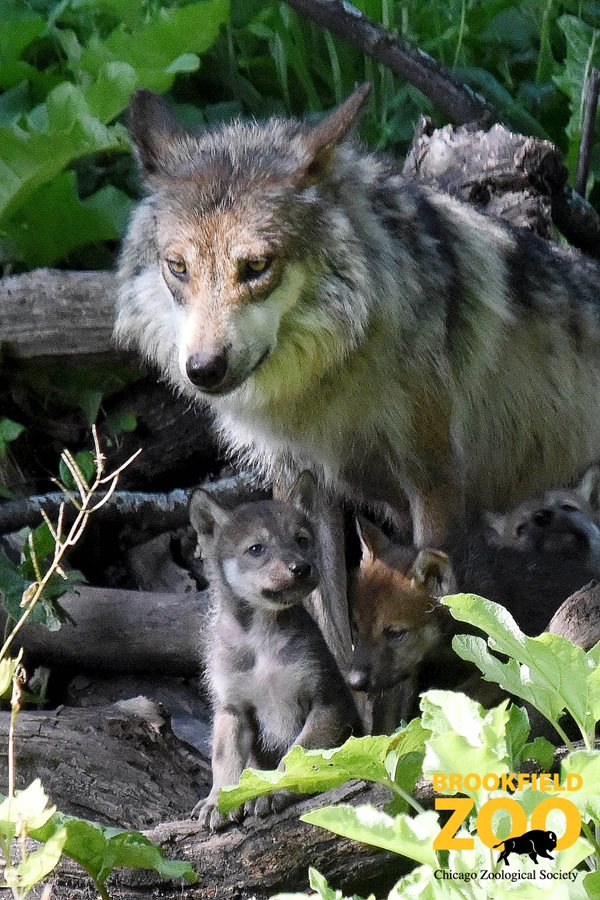20
Feb
In the News: Mexican wolf numbers bounce back

The number of Mexican wolves living in Arizona and New Mexico has reached its highest level since efforts to reintroduce the endangered animals into the wild began in 1998.
The latest count found there are at least 113 Mexican wolves in the wild, up from 97 counted in 2015.
A higher survival rate of wild-born pups is the main factor in this year’s higher numbers, said John Bradley, spokesman with the U.S. Fish and Wildlife Service. The count found that 50 wild-born pups had survived through the end of 2016, compared to 23 the year before.
Wildlife officials called the most recent numbers encouraging after 2015, when counts found 13 fewer wolves than the year before. Before that, counts showed five years of positive population growth.
But wolf managers still have more work to do, U.S. Fish and Wildlife Service Southwest Regional Director Benjamin Tuggle said in a statement. The agency’s goal is to achieve an average annual growth rate of 10 percent in the Mexican wolf population.
Friday’s wolf count comes on the heels of a proposal from the Mexican Wolf Interagency Field Team to release additional captive wolf packs and wolf pups into the wild this year. The infusion of new blood is needed to increase genetic diversity among the animals, which currently are as related to one another as full siblings.
The plan calls for introducing two wolf packs now in captivity into wilderness areas in western New Mexico. That part won’t move forward without a court ruling though. Wolf releases in the state are on hold while a federal appeals court decides a case filed by New Mexico and 18 other states challenging the U.S. Fish and Wildlife Service’s implementation of the Endangered Species Act within their borders.
In Arizona, the plan for this year doesn’t include any proposed adult wolf releases, but does call for the cross foster of up to six wolf pups.
The procedure, first attempted by wildlife managers in 2014, involves transferring pups born in captivity into the den of a wild wolf pack less than two weeks after they are born. The hope is that the wild mother will raise the pups as their own.
The procedure has been considered a risky endeavor, though wolf recovery managers have been encouraged by signs of success in recent cross foster efforts.
This year’s count found that at least three of six wolf pups cross-fostered in 2016 are still alive. The Mexican Wolf Interagency Field Team also found that both pups involved in a 2014 cross-foster are still alive. The male has dispersed from his pack and is traveling with a female wolf while the female is now part of a breeding pair.
That marks the first time that a cross foster has contributed genetically to Mexican wolf recovery, which is a significant milestone, said Jim deVos, assistant director of Wildlife Management for the Arizona Game and Fish Department.
In the midst of a highly polarized debate about releases of captive adult wolves into the wild, cross fostering has emerged as an option that is more socially palatable, deVos said.
After analysis of recent population and genetic data, his agency is convinced that it can meet necessary population and genetic management goals through cross fostering alone, deVos said.
“Adult releases aren’t entirely off the table but it seems like we’re capable of genetic rescue with the use of fostered pups,” he said.
It was that outlook that helped shape the recommendations included in the draft plan for Mexican wolf releases this year, deVos said.
But those proposals drew skepticism from Michael Robinson with the Center for Biological Diversity.
The New Mexico releases, while a good idea, are “idealistic” due to current legal gridlock, Robinson said.
As for the cross-fostering, Robinson is one of those who describes it as still a risky procedure.
“There is no reason pups should be taken from their parents and released in Arizona,” he said. “They and their parents should be released in Arizona.”
He lauded the animals for surviving through genetic struggles, illegal killings, management setbacks and more.
“These animals are tough. They are up against politicized management and a genetic crisis that stems from it and they are still increasing in numbers,” he said.
In addition to its yearly wolf release plans, the U.S. Fish and Wildlife Service is under court order to release a draft Mexican wolf recovery plan later this year that is expected to provide a better roadmap for creating a self-sustaining population. The current recovery plan dates back to 1982.
This article was published in the Arizona Daily Sun



